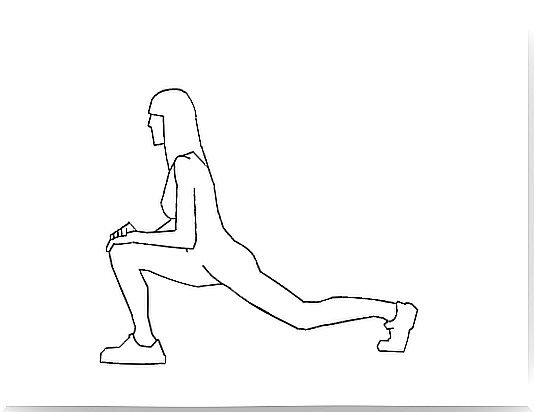4 Basic Rules For Effective And Good Stretching
Stretching exercises before and after each training session are very important. It is crucial for good stretching that your breathing is controlled and synchronized with your movements.

You probably already know most of the stretching exercises. Still, are you wondering how to do effective and good stretching ? Or maybe you don’t even believe in a positive effect of stretching?
In today’s article we explain the four basic rules for efficient and health-promoting stretching.
Using the example of well-known stretching exercises, we will show you how to do them correctly. If you follow the four basic rules for good stretching , then you will be able to benefit as much as possible from the positive effects of the exercises.
Basic rules for effective and good stretching
Before and after each training session, you should stretch and warm up your muscles well. This will avoid unnecessary injuries and your muscles will regenerate faster overall.
If you experience cramps or unusual pain while stretching, it is possible that you are not doing the exercises correctly. In the following, we will explain to you in more detail how to do proper and good stretching and then you can get started right away.
1. Take enough time to do a good stretch

Sometimes you’re in a rush and just want to do a few quick stretches, especially if you’ve got other plans after your workout. Maybe you just want to go home quickly because you are hungry or you still have an appointment, you are certainly familiar with such situations!
However, this time pressure can often have the opposite effect when stretching. Be careful when stretching, not only to protect yourself from unwanted injuries, but also because otherwise it will not have the desired effect. Good stretching takes a little time and for the following reasons:
- The calmer you do the exercises, the better their effect on your muscles and your body.
- Make every move as slow as you can.
For example, think about the stretching of your neck. If you make too jerky and uncontrolled movements, you could get injured quickly.
If you suddenly notice a sharp pain and cramping in your muscles, then you are certainly not doing the exercise correctly. As a result of improper stretching, instead of stretching and relaxing your muscles, you may instead tighten them up even more.
2. Pull a little on the muscle you want to stretch

Another basic rule of good stretching is that you need to pull a little on the muscle you are trying to stretch. Take the quadriceps as an example. In this stretching exercise, you stretch one leg backwards, grab the other knee, and stretch the muscle.
If you don’t notice any slight pulling in your quadriceps, then you are definitely not stretching correctly. You need to be able to feel the stretch in the muscle.
How can you do this exercise correctly? Here are our tips :
- Try to intensify the stretch. The yoga position “King Dancer” is a difficult but very effective exercise. Your quadriceps are sure to make an impact.
- Change the position. A variation on the quadriceps stretch described above is that you kneel on the floor and let your body fall backwards. This will stretch both legs at the same time. In addition, the intensity of the stretching increases with your body weight.
3. Don’t forget to breathe

Another basic element of a good stretch is breathing. If you think that breathing is only important in yoga, meditation or Pilates, then you are wrong. Breathing is also crucial when stretching.
As you inhale, your muscles stretch and contract, and this increases the stretch.
- For example, when you stretch your triceps, you breathe in as you move your bent arm behind your head.
- Do the exercise slowly and continue to breathe in, while at the same time placing the other hand on the elbow with gentle pressure to increase the stretch.
- Then you exhale while slowly relieving the pressure on your elbows and at the same time slowly moving your arm back to the starting position. Exhaling helps relax the muscles, while inhaling helps stretch them.
4. Duration is crucial for good stretching
The fourth basic rule of good stretching relates to how long you do each exercise for. Chances are, you often don’t pay close attention to the time you spend on each stretch. So it can happen that you only do some of them for a few seconds. And that’s not good at all.
Basically, you should hold each stretch for about 30 seconds. This may not be easy at first, but as time goes on, you won’t find it difficult. And the results will speak for themselves.
You will notice how you gradually become more stretchy and flexible as you practice.
Don’t underestimate the benefits of stretching
If you do not have enough schenkst attention to stretching your muscles, then you will increase so that your risk of injury, you get faster cramps and stay a total inflexible. That’s why we’ve outlined the four basic rules for good stretching.
Also remember that you should always stretch your entire body, your legs, your back, your arms and also your neck. And don’t forget the four basic rules that we described to you today.
Don’t let post-workout fatigue or excessive rush to stop you from doing the stretch. Effective and good stretching will help you maintain your health and flexibility. Do it before and after each training session and over time you will be grateful for the positive effects.









